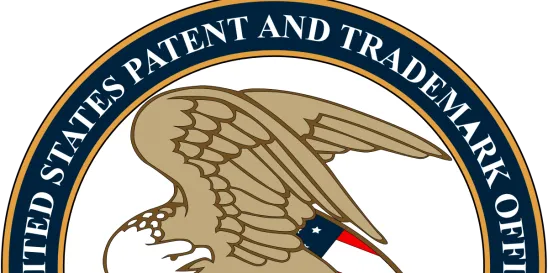The USPTO has prepared soon to be published supplemental guidance for design patent examination for computer-generated electronic images. This guidance relates to determining whether a design patent claim including a computer-generated electronic image per se or a computer-generated electronic image shown on a display panel (e.g., computer screen, monitor, computer display system, mobile phone screen, virtual reality/augmented reality goggles), or a portion thereof, satisfies the article of manufacture requirement in 35 U.S.C. 171. This guidance supplements the guidance provided in section 1504.01(a), subsection (I) of the Manual of Patent Examining Procedure (MPEP). According to the USPTO, this supplemental guidance does not change the current guidance but provides important clarifications.
In a prior post, we covered that in September 2023 the USPTO issued the 1 millionth design patent. One of the factors leading up to this milestone was the increase in design patents for computer generated icons and certain aspects of the graphical user interface (GUI) elements of a computer program. Due to a relatively recent Supreme Court decision, which has made it more difficult to obtain utility patent protection for some of the functional aspects of computer software, more companies are filing for design patents to supplement their utility patent protection.
Background
This guidance is a follow up to the USPTO’s December 2020 request seeking public input on whether its interpretation of the article of manufacture requirement should be revised to protect digital designs that encompass new and emerging technologies. A summary of the public comments are here.
It has long been the law that a picture standing alone or on a computer screen is not protectable by a design patent. The difference between statutory design subject matter and a mere picture or surface ornamentation per se is the embodiment of the design in an article of manufacture. Over time, the law evolved such that an integral and active component in the operation of a programmed computer displaying the design, if properly presented and claimed, would constitute statutory subject matter under 35 U.S.C. 171. This is reflected in the current examination guidelines in the MPEP.
Supplemental Guidance
The guidance clarifies:
- the mere display of a computer-generated electronic image that is not a computer icon or a GUI (i.e., that is not an integral and active component in the operation of a computer) shown on a display panel does not constitute statutory subject matter under 35 U.S.C. 171.
- a computer icon or a GUI shown on a display panel, or a portion thereof, is more than a mere display of a picture on a screen and is eligible under 35 U.S.C. 171, if properly presented and claimed (e.g., the drawing(s) fully discloses the design as embodied in the article of manufacture)
The guidance provides additional details on the application requirements. It also includes examples with analysis of whether the examples meet the requirements. Some of the key takeaways are:
- the complete disclosure must be considered when evaluating whether a design claim that includes a computer-generated electronic image complies with the article of manufacture requirement, including what is claimed as the design and whether the design is embodied in an article of manufacture
- the title and claim must adequately describe a design for an article of manufacture rather than a mere illustration of a picture displayed electronically and should not be for a computer icon or a GUI alone
- a claim and title directed to a display screen with an icon or a GUI adequately describes a design for an article of manufacture under 35 U.S.C. 171 (although the underlying article of manufacture has functional properties, the design of the icon or the GUI itself is not functional, and thus does not conflict with the requirement that design patent protection extend only to the “ornamental design” of an article of manufacture)
- the following are non-exhaustive examples of claim language and titles that do not adequately describe a design for an article of manufacture under 35 U.S.C. 171:
- “display screen with virtual image”
- “virtual image for display on computer screen”
- “computer icon,”
- “icon for computer screen”
- the following are non-exhaustive examples of claim language and titles that do adequately describe a design for an article of manufacture under 35 U.S.C. 171:
- “computer screen with an icon”
- “display panel with GUI”
- “display screen or portion thereof with icon”
- “portion of a computer screen with an icon”
- “portion of a display panel with an icon”
- “portion of a monitor displayed with an icon.”
- the following are non-exhaustive examples of claim language and titles that do not adequately describe a design for an article of manufacture under 35 U.S.C. 171:
- the drawings should show a display panel, or a portion thereof, in sufficient views to fully disclose the design as embodied in the article and depict a computer icon or a GUI embodied in a display panel, or a portion thereof, in either solid or broken lines
- amendments to the written description, drawings, and/or claim attempting to overcome a non-final rejection will ordinarily be entered, but no new matter may be included – if the disclosure as a whole suggests or describes the claimed subject matter as a computer icon or a GUI embodied in a display panel, or a portion thereof, the drawing may be amended to overcome the rejection
Given the more difficult environment regarding software-based utility patents, design patents for computer icons and GUIs have become more popular and should be considered as part of a comprehensive IP protection strategy.



 />i
/>i

